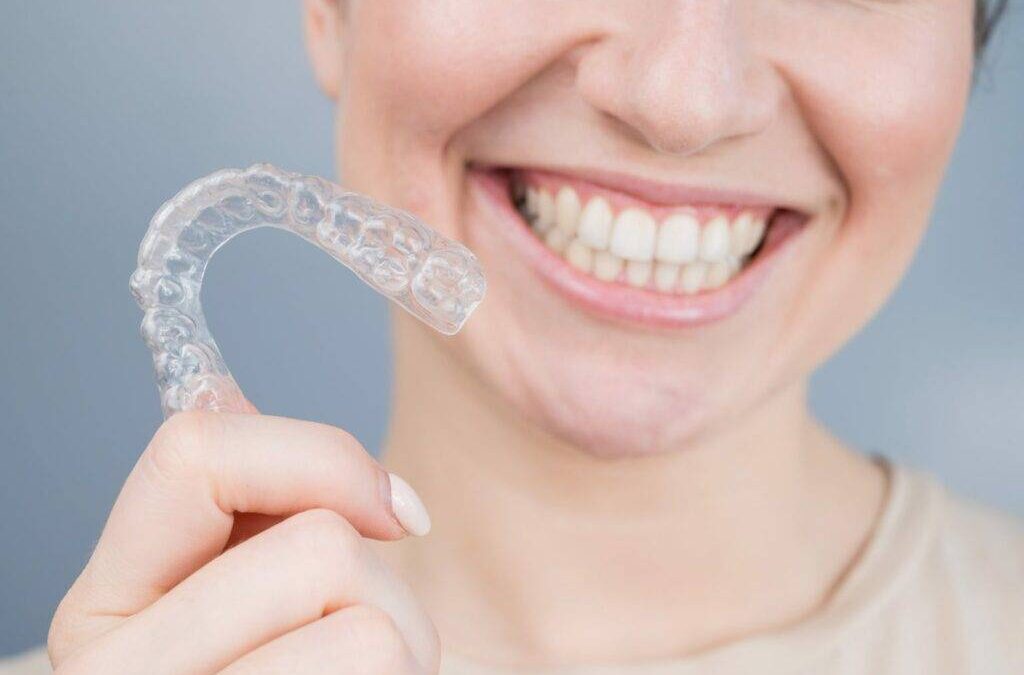
by Dclinicdubai | Sep 19, 2025 | Health
Crowded teeth can cause both functional and aesthetic challenges, making it difficult to clean properly and affecting the harmony of your smile. Many patients seeking Aligners Dubai wonder if clear aligners can effectively treat this condition. Thanks to modern orthodontic advancements, aligners are now one of the most popular solutions for addressing dental crowding. They not only improve alignment but also enhance oral health while offering a discreet and comfortable treatment process.
Understanding Dental Crowding:
Dental crowding occurs when there isn’t enough space in the jaw to accommodate all teeth properly. This leads to overlapping, twisting, or shifting of teeth into awkward positions. Crowding can range from mild misalignment to severe cases where multiple teeth are stacked over each other, often causing bite issues and making oral hygiene more challenging.
How Aligners Work to Correct Crowding:
Aligners use controlled and gradual force to move teeth into their correct positions. The treatment process involves a series of custom-made trays designed to fit snugly over your teeth. Each set of aligners moves teeth slightly, creating the space necessary for alignment. Over time, this results in improved spacing, reduced overlapping, and a straighter smile.
Digital Technology in Planning Treatment:
Modern aligner treatments rely on digital scans and advanced software to design a step-by-step plan. This technology allows orthodontists to predict how crowded teeth will shift and where space can be created. 3D simulations also let patients preview their expected results before beginning treatment, adding clarity and motivation throughout the journey.
Factors That Influence Treatment Success:
The effectiveness of aligners in correcting crowded teeth depends on several key factors:
-
Severity of crowding – Mild to moderate cases are more easily treated.
-
Jaw size and shape – Narrow jaws may need expansion strategies.
-
Patient compliance – Wearing aligners 20–22 hours daily is essential.
-
Orthodontist expertise – Proper planning ensures successful outcomes.
Methods Aligners Use to Create Space:
For crowded teeth, aligners can create space through different techniques:
-
Interproximal reduction (IPR): Slight reshaping of enamel to open space between teeth.
-
Expansion of arches: Gentle widening of dental arches to accommodate teeth.
-
Strategic tooth movement: Gradual shifting of select teeth to make room for others.
-
Attachments and buttons: Small additions that enhance aligner grip for precise movements.
Advantages of Aligners for Crowded Teeth:
Choosing aligners for crowded teeth provides unique benefits compared to traditional braces:
-
Virtually invisible, making treatment discreet.
-
Removable trays allow easier brushing and flossing.
-
Smooth plastic design reduces irritation to gums and cheeks.
-
Customized trays ensure a tailored approach to each case.
-
Fewer clinic visits thanks to digital monitoring and pre-planned trays.
Comparing Aligners to Braces for Crowding:
While braces are effective for all levels of crowding, aligners have emerged as a strong alternative for most mild and moderate cases. Braces may still be recommended for extremely severe crowding, but aligners provide the advantage of aesthetics and comfort, making them preferable for adults and teens who want discreet solutions.
Challenges in Treating Severe Crowding:
In cases of extreme crowding, aligners may require additional orthodontic techniques for success. This could include combining aligners with extractions or using auxiliary appliances. However, even in these cases, aligners have shown impressive results when managed by skilled orthodontists who leverage advanced treatment planning.
Patient Commitment During Treatment:
To achieve results with aligners for crowded teeth, patient commitment is crucial. Aligners must be worn consistently for 20–22 hours per day and only removed during meals or oral hygiene routines. Regular follow-ups, even with remote monitoring, are essential to track progress and make adjustments if necessary.
Aligners Dubai and Professional Expertise:
Patients considering Aligners Dubai for crowded teeth benefit from access to world-class orthodontic technology and highly experienced specialists. Clinics use digital scans, advanced treatment planning, and precise aligner systems to deliver results that balance both aesthetics and functionality. With personalized care, patients can achieve significant improvements in their smiles without the drawbacks of traditional braces.
Final Thoughts:
Clear aligners have transformed orthodontic treatment for crowded teeth, offering a modern, effective, and discreet alternative to braces. By creating space through precise movements, aligners gradually straighten overlapping teeth while improving oral health. Patients seeking Aligners Dubai can trust that with the right expertise and compliance, even challenging cases of crowding can be successfully treated, leading to a confident and perfectly aligned smile.
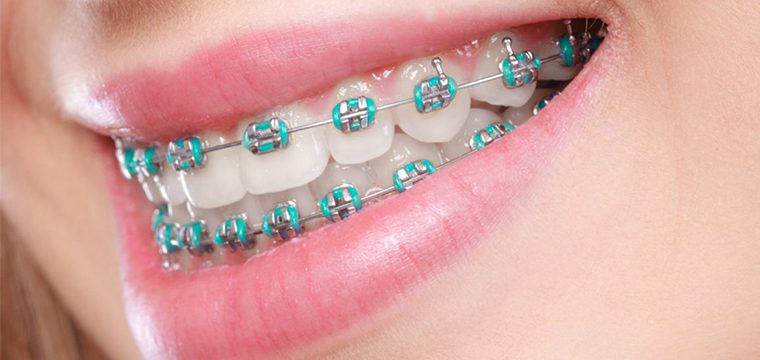
by Dclinicdubai | Sep 19, 2025 | Health
Orthodontic treatment is not only about achieving a beautiful smile but also about correcting dental misalignments that affect oral health. Many patients who choose Metal Braces in Dubai wonder how these small brackets and wires can gradually transform crooked teeth into straight, well-aligned smiles. The answer lies in biomechanics, consistent pressure, and the body’s natural bone remodeling process. Understanding the science behind braces can make the journey more exciting and reassuring.
The Role of Brackets and Wires:
Metal braces consist of brackets bonded to the teeth and connected by an archwire. Each component works together to apply gentle, consistent pressure on the teeth. The brackets act as anchors, while the archwire provides the force that guides teeth into new positions. Over time, orthodontists adjust the wire tension to ensure the teeth continue to move in the right direction, bringing about gradual and precise alignment.
How Pressure Moves Teeth:
The science behind tooth movement begins with pressure. When braces apply force, the periodontal ligament—the soft tissue that surrounds the tooth root—responds by creating a biological reaction. On the side where pressure is applied, bone tissue breaks down (resorption), and on the opposite side, new bone forms (deposition). This process allows the tooth to shift within its socket safely, creating a permanent adjustment over time.
The Role of Bone Remodeling:
Bone remodeling is at the core of orthodontic science. As teeth move, the jawbone continually adapts by resorbing and rebuilding itself in response to the applied pressure. This biological adaptability ensures that the teeth remain stable in their new positions once the treatment is complete. Without this process, tooth movement would not be possible, and braces would be ineffective.
The Timeline of Tooth Movement:
The speed of alignment varies depending on each patient’s case. Mild misalignments may correct in months, while complex cases can take years. Typically, treatment with metal braces lasts 18 to 24 months. This timeline allows for controlled movement, ensuring teeth remain healthy and roots are not damaged by excessive force. Orthodontists carefully design treatment plans that balance effectiveness with patient comfort and safety.
Importance of Regular Adjustments:
Orthodontic appointments are essential to the success of braces. During these visits, the orthodontist tightens or adjusts the archwire to maintain the correct level of pressure. These changes are necessary to keep teeth moving in the right direction and to avoid stagnation. Skipping or delaying adjustments can slow down progress and extend the overall treatment timeline.
How Elastic Bands Enhance Movement:
In some cases, orthodontists add elastic bands to braces. These elastics connect brackets across the upper and lower jaws, guiding teeth and jaws into better alignment. They play a vital role in correcting bite issues, such as overbites and underbites, by applying additional force that braces alone cannot achieve. Consistent use of elastics as directed is crucial for timely results.
Managing Forces Safely:
The force applied by braces must be carefully controlled. Too much pressure can damage the teeth, roots, or bone, while too little will not achieve results. This is why professional monitoring is essential. Patients treated with Metal Braces in Dubai benefit from highly trained orthodontists who understand how to balance forces to create safe, predictable outcomes.
The Final Stage: Retention:
After braces are removed, teeth are held in place by retainers. This stage is just as important as active treatment because teeth tend to shift back to their original positions without support. Retainers allow the bone and surrounding tissues to stabilize fully around the newly aligned teeth, ensuring the results last a lifetime. Patients who wear their retainers as directed can enjoy permanent improvements in both function and aesthetics.
Benefits Beyond Straight Teeth:
The science of braces delivers more than cosmetic benefits. Correctly aligned teeth improve bite function, reduce the risk of uneven wear, and make oral hygiene more effective. Straight teeth are easier to brush and floss, which lowers the chances of cavities and gum disease. For many patients, the investment in braces provides not only a more attractive smile but also a healthier mouth overall.
Final Thoughts:
The science behind braces is a fascinating blend of biology and biomechanics. Through controlled pressure, bone remodeling, and precise adjustments, braces gradually transform dental alignment in a safe and effective way. Patients undergoing treatment with Metal Braces in Dubai can feel confident knowing that their journey is supported by proven science and guided by expert orthodontists. With patience, proper care, and adherence to professional advice, the results are both life-changing and long-lasting.
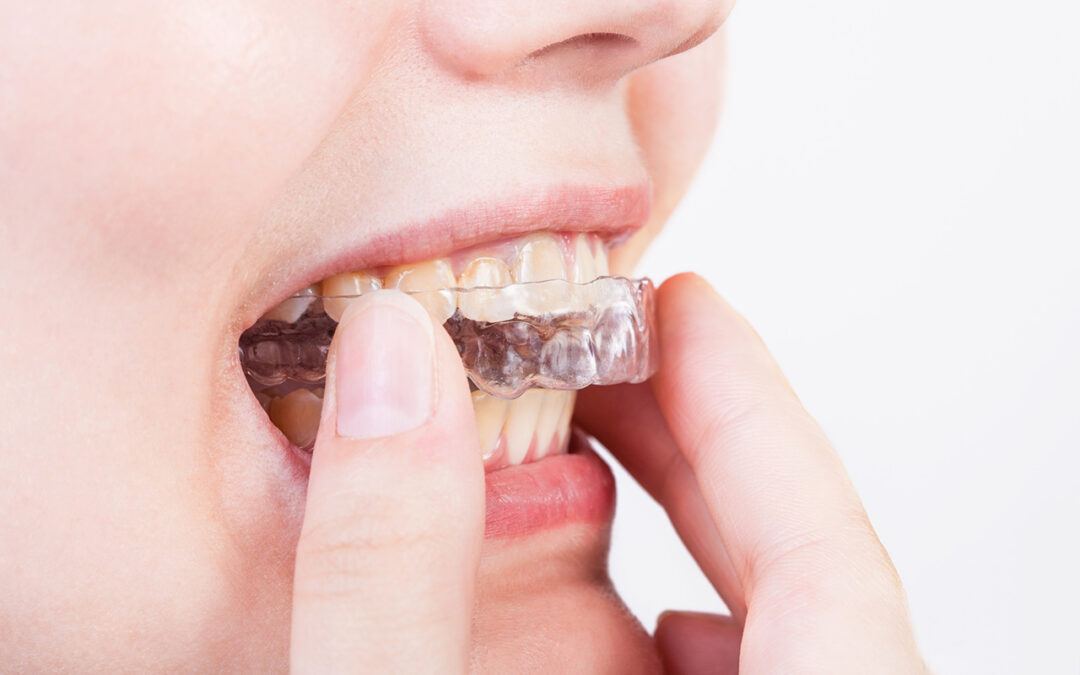
by Dclinicdubai | Sep 18, 2025 | Health
Sleep apnea is a serious condition where breathing repeatedly stops and starts during sleep, often leaving individuals exhausted and at risk for long-term health complications. While treatments like CPAP machines are widely known, many patients are now exploring alternative options such as dental mouthguards. Professionally designed mouthguards in Dubai are becoming a popular solution for people struggling with mild to moderate sleep apnea, offering a less intrusive approach compared to traditional therapies.
Understanding Sleep Apnea:
Sleep apnea occurs when the airway becomes partially or completely blocked during sleep, leading to interrupted breathing patterns. This can cause snoring, daytime fatigue, and increased risks for heart disease, stroke, and high blood pressure. The condition is often underdiagnosed because its symptoms occur at night, but seeking early treatment is critical for overall health and quality of life.
The Role of Mouthguards in Treatment:
Mouthguards for sleep apnea, also called oral appliances, are specifically designed to reposition the lower jaw and tongue to keep the airway open during sleep. By preventing airway collapse, they help improve airflow and reduce snoring. This makes them particularly effective for individuals with mild to moderate obstructive sleep apnea who cannot tolerate CPAP therapy.
How Dental Mouthguards Work:
Unlike standard sports mouthguards, sleep apnea devices are crafted with precision to address airway obstruction. Their functions include:
-
Gently shifting the lower jaw forward to prevent airway collapse
-
Holding the tongue in place to stop it from blocking airflow
-
Improving oxygen flow throughout the night for uninterrupted breathing
-
Reducing or eliminating snoring that often accompanies sleep apnea
This simple yet effective mechanism allows many patients to sleep more peacefully without relying on bulky equipment.
Benefits of Using Mouthguards for Sleep Apnea:
Oral appliances offer several advantages over other treatment methods:
-
Greater comfort compared to CPAP masks
-
Portability and ease of travel
-
Silent operation with no machine noise
-
Less invasive than surgical procedures
-
Enhanced compliance rates, as patients are more likely to use them consistently
These benefits make dental mouthguards an appealing option for patients seeking both comfort and practicality.
Who Is a Good Candidate?:
Not everyone with sleep apnea can benefit equally from mouthguards. Ideal candidates include:
-
Patients with mild to moderate obstructive sleep apnea
-
Those who experience loud snoring and disrupted sleep
-
Individuals unable to tolerate CPAP machines
-
Patients seeking a portable and convenient solution
-
People without severe jaw alignment or dental issues
A thorough dental and medical evaluation is essential before recommending this treatment.
Comparison to CPAP Therapy:
Continuous Positive Airway Pressure (CPAP) therapy is considered the gold standard for moderate to severe sleep apnea, but many patients find it difficult to adapt to. Mouthguards offer a more comfortable and less intimidating alternative. While CPAP is generally more effective for severe cases, oral appliances are often sufficient for mild to moderate conditions, especially for patients struggling with compliance.
Custom vs. Over-the-Counter Devices:
Over-the-counter mouthguards may be marketed for snoring, but they lack the precision and effectiveness of custom-made dental appliances. Custom devices are designed using impressions of the patient’s teeth, ensuring a proper fit and long-term comfort. The benefits of custom mouthguards include:
-
Enhanced durability and strength
-
Tailored fit to prevent jaw discomfort
-
Professional adjustments for optimal effectiveness
-
Better long-term outcomes compared to store-bought devices
This customization ensures the device does not just mask symptoms but provides genuine therapeutic benefits.
Possible Side Effects:
Like any treatment, mouthguards for sleep apnea may cause minor side effects, especially during the adjustment period. Common issues include:
-
Jaw soreness or stiffness in the morning
-
Excessive salivation or dry mouth
-
Temporary changes in bite alignment
-
Gum or tooth sensitivity
These effects usually diminish over time as the patient adapts to the device. Regular follow-ups with a dentist ensure that the appliance continues to function comfortably and effectively.
Maintenance and Care:
Caring for a sleep apnea mouthguard is essential for both hygiene and longevity. Dentists recommend:
-
Cleaning daily with a soft toothbrush and mild soap
-
Rinsing thoroughly before and after use
-
Storing in a ventilated case to avoid bacterial buildup
-
Avoiding exposure to hot water or direct heat to prevent warping
-
Bringing the device to dental checkups for inspection and adjustments
Proper care extends the life of the mouthguard and maintains its effectiveness.
The Importance of Professional Guidance:
Although mouthguards for sleep apnea are effective, they must be fitted and monitored by a dental professional. Self-treatment with generic devices can be ineffective or even harmful. Dentists trained in sleep medicine collaborate with sleep specialists to ensure the device is addressing the underlying condition safely and efficiently.
Final Thoughts:
Mouthguards for sleep apnea are proving to be a reliable, patient-friendly alternative to traditional treatment options. For individuals with mild to moderate obstructive sleep apnea, they offer improved comfort, better compliance, and a significant reduction in symptoms. With professional guidance, custom-designed mouthguards in Dubai can help patients breathe easier, sleep more soundly, and protect their long-term health. They are more than just dental devices—they are life-changing tools for better rest and overall wellness.
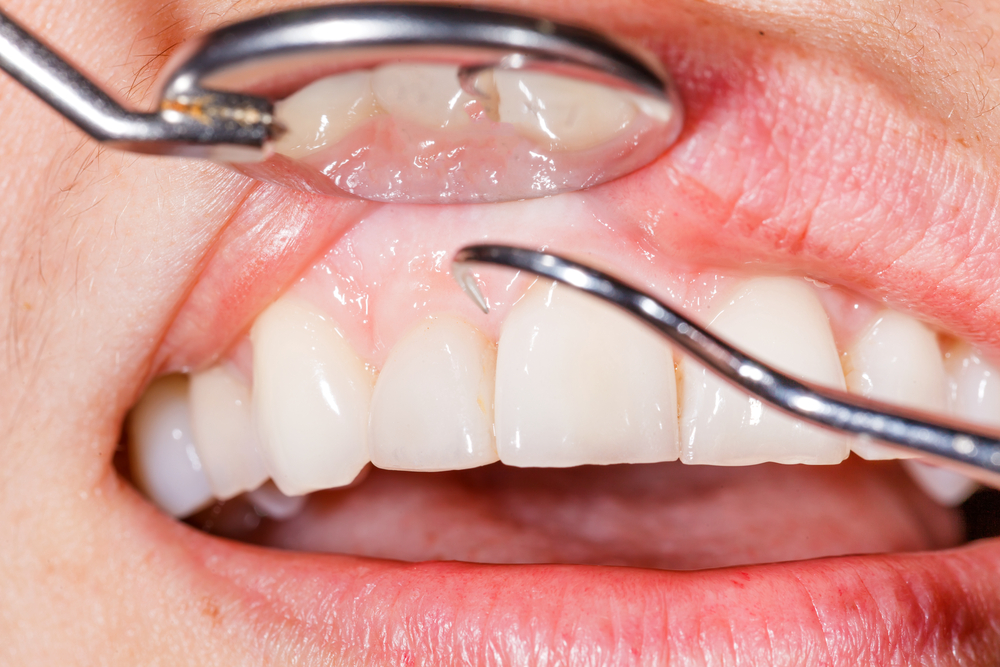
by Dclinicdubai | Sep 18, 2025 | Health
Maintaining strong gums is just as important as keeping teeth healthy, yet many people struggle with gum overgrowth or disease that makes oral hygiene more challenging. Gingivectomy (Gum Tissue Removal) in Dubai is a specialized treatment that not only enhances the appearance of the smile but also plays a vital role in improving oral hygiene and long-term gum health. By removing excess tissue and reshaping the gum line, this procedure reduces the risk of infections, enhances cleaning efficiency, and supports overall oral wellness.
Understanding Gingivectomy:
A gingivectomy is a dental procedure designed to remove and reshape excess gum tissue around the teeth. While often associated with cosmetic improvement, its primary value lies in creating a healthier environment for both the gums and teeth. By eliminating areas where bacteria thrive, gingivectomy makes oral hygiene practices more effective and reduces the likelihood of gum disease progression.
Why Excess Gum Tissue Affects Oral Health:
When gums overgrow or become inflamed, they form deep pockets where bacteria and plaque easily accumulate. These hidden areas can be difficult to clean with brushing and flossing, leading to infections and, eventually, periodontal disease. Removing the extra tissue reduces these risks while making daily cleaning easier and more thorough.
Gingivectomy and Plaque Control:
Plaque control is essential for preventing gum disease, tooth decay, and bad breath. Gingivectomy helps by reshaping gums to expose more of the tooth’s surface and reducing spaces where bacteria hide. This makes brushing and flossing more effective, ensuring plaque does not build up in inaccessible areas.
Enhanced Access for Oral Hygiene:
One of the key benefits of gingivectomy is improved access for cleaning. By eliminating excessive gum tissue, patients gain better visibility and reach when brushing and flossing. This ensures a more thorough removal of food particles and bacteria that could otherwise contribute to cavities or gum inflammation.
Preventing Gum Disease Progression:
For patients already experiencing gum disease, gingivectomy serves as both a treatment and a preventive measure. By removing diseased tissue and reshaping the gums, dentists can halt the progression of periodontal disease. This reduces the risk of more serious complications, such as tooth loss or jawbone damage, which often occur if gum problems are left untreated.
Cosmetic Benefits with Health Impact:
Although gingivectomy is primarily done for medical reasons, its cosmetic benefits also support better oral health. A well-contoured gum line makes the teeth appear longer and more proportional, boosting confidence while motivating patients to maintain a stronger oral care routine. Patients often find themselves more committed to oral hygiene after noticing visible improvements in their smile.
Laser-Assisted Gingivectomy:
Modern dentistry in Dubai often incorporates laser technology for gingivectomy procedures. Laser-assisted treatments provide several advantages:
-
Reduced bleeding and faster healing
-
Minimal discomfort during and after treatment
-
Greater precision in reshaping gum lines
-
Lower risk of infection due to sterilizing effects of the laser
These benefits make gingivectomy a smoother, safer, and more efficient procedure for patients.
Recovery and Post-Treatment Care:
After gingivectomy, recovery is generally quick, with most patients resuming normal activities within a few days. Mild discomfort or swelling may occur but usually subsides quickly. Dentists typically recommend:
-
Sticking to a soft diet for several days
-
Avoiding spicy or acidic foods
-
Practicing gentle oral hygiene until healing is complete
-
Attending follow-up appointments for monitoring
Following these aftercare steps ensures gums heal properly while maintaining the benefits of the procedure.
Long-Term Benefits for Gum Health:
When combined with consistent oral hygiene practices, gingivectomy provides long-lasting benefits for gum and tooth health. Patients can expect:
-
Easier daily cleaning and flossing
-
Reduced risk of gum infections and cavities
-
Improved gum-to-tooth ratio for a healthier appearance
-
Stronger protection against periodontal disease
Why Choose Gingivectomy in Dubai:
Dubai is home to advanced dental clinics that specialize in treatments like gingivectomy, offering patients access to cutting-edge technology and highly trained dental professionals. Patients who choose gingivectomy here enjoy personalized care plans, laser-based precision, and comprehensive aftercare, ensuring both oral health improvement and aesthetic satisfaction.
Final Thoughts:
For those struggling with gum overgrowth, poor plaque control, or the early stages of periodontal disease, Gingivectomy (Gum Tissue Removal) in Dubai offers an effective solution. By removing excess tissue and reshaping the gums, the procedure significantly enhances oral hygiene and strengthens long-term gum health. With the added advantages of laser dentistry and skilled professionals in Dubai, patients can achieve both a healthier smile and lasting protection against gum disease. Investing in gingivectomy today means investing in a healthier, more confident smile for years to come.
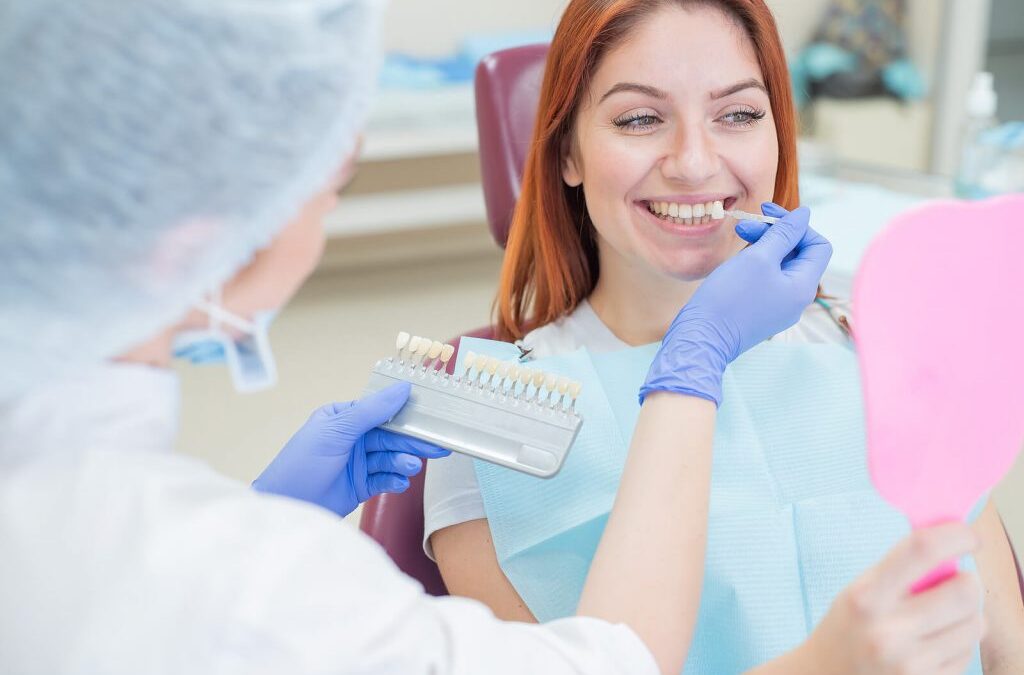
by Dclinicdubai | Sep 17, 2025 | Health
When facial injuries from accidents or trauma affect teeth, gums, or jaw structures, the path to recovery often goes beyond physical healing. For many survivors, Full Mouth Rehabilitation in Dubai provides a comprehensive solution to restore oral function, aesthetics, and confidence. This advanced dental approach combines multiple procedures into a tailored treatment plan designed to rebuild smiles damaged by unexpected events.
The Impact of Trauma on Oral Health:
Accidents can result in chipped, broken, or completely lost teeth. In some cases, trauma also causes misalignment, gum damage, or fractures to the jaw. These issues not only impair chewing and speech but also affect confidence and overall health. Full mouth rehabilitation addresses all these concerns through customized restorative and functional treatments.
Key Goals of Rehabilitation After Trauma:
The primary objectives of full mouth rehabilitation for accident survivors include restoring comfort, ensuring proper functionality, and rebuilding the appearance of the smile. By focusing on both health and aesthetics, this approach helps patients regain confidence in daily life.
Procedures Commonly Involved in Rehabilitation:
Depending on the severity of the trauma, several treatments may be combined to achieve optimal results. Common procedures include:
-
Dental implants to replace missing teeth.
-
Crowns and bridges to restore fractured or weakened teeth.
-
Veneers for chipped or aesthetically compromised teeth.
-
Orthodontic treatments to correct alignment after injury.
-
Periodontal therapy for damaged gums.
The Role of Dental Implants in Recovery:
For survivors who have lost one or more teeth, implants play a crucial role in restoring stability and bite strength. They not only look and feel like natural teeth but also prevent bone loss in the jaw, ensuring long-term oral health and durability.
Rebuilding Functionality Alongside Aesthetics:
While aesthetics are vital for confidence, the ability to chew, speak, and bite properly is equally important. Full mouth rehabilitation ensures that teeth are rebuilt for strength, alignment, and efficiency, restoring both the look and the performance of the smile.
Advanced Technology in Trauma Rehabilitation:
Modern dental technologies such as 3D imaging, digital scans, and computer-guided surgery are widely used in Dubai. These tools help dentists design accurate, personalized treatment plans and ensure precision in every stage of rehabilitation.
Psychological Benefits of Smile Restoration:
Survivors of trauma often experience emotional struggles due to visible dental damage. Restoring a smile through comprehensive rehabilitation not only improves oral function but also helps rebuild self-esteem, confidence, and emotional well-being.
Customized Treatment Plans for Every Survivor:
Each trauma case is unique, requiring a personalized approach. Dentists in Dubai carefully evaluate the extent of injury, oral health condition, and patient goals before creating a step-by-step plan. This ensures treatments address both immediate needs and long-term stability.
Addressing Jaw and Bite Issues After Trauma:
Accidents sometimes affect the temporomandibular joint (TMJ) or create bite misalignment. Rehabilitation plans often include bite adjustments, orthodontics, or surgical interventions to restore balance and relieve jaw pain associated with trauma.
Managing Soft Tissue Damage in Rehabilitation:
Gum injuries and soft tissue trauma require specialized care before restorative treatments can begin. Periodontal therapy, grafting, or other gum procedures may be integrated to create a strong foundation for crowns, implants, or veneers.
Long-Term Benefits of Rehabilitation After Trauma:
Beyond immediate recovery, full mouth rehabilitation provides lifelong benefits, including improved chewing, stronger teeth, stable bite alignment, and a natural-looking smile. The durability of modern treatments ensures patients can live confidently without constant worry about oral health.
Candidates for Trauma-Related Rehabilitation:
Full mouth rehabilitation is particularly beneficial for:
-
Accident survivors with multiple missing teeth.
-
Patients with fractured or heavily damaged teeth.
-
Individuals suffering from jaw or bite complications after trauma.
-
Those seeking both functional and cosmetic recovery.
Recovery Timeline and Expectations:
The rehabilitation process can span several months, depending on the complexity of treatment. While some patients may need immediate restorations, others require phased procedures such as bone grafting or orthodontics before implants and crowns can be placed.
Choosing the Right Dentist in Dubai:
Selecting a skilled dentist experienced in trauma-related rehabilitation is crucial. Look for clinics offering advanced technology, multidisciplinary expertise, and a proven track record in handling complex restorative cases.
Final Thoughts:
Accidents and trauma can have a devastating impact on oral health, but recovery is possible with the right care. Full Mouth Rehabilitation in Dubai provides a comprehensive path to restoring function, aesthetics, and confidence for survivors. By combining advanced procedures with personalized care, this treatment transforms smiles and lives, offering patients the chance to move forward with renewed strength and self-assurance.





